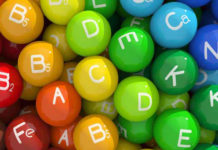Lifestyle choices could slow familial frontotemporal dementia
Patients can influence outcomes despite a genetic diagnosis, study suggests
Date:January 8, 2020
Source:University of California – San Francisco
Summary: A physically and mentally active lifestyle confers resilience to frontotemporal dementia (FTD), even in people whose genetic profile makes the eventual development of the disease virtually inevitable, according to new research.

A physically and mentally active lifestyle confers resilience to frontotemporal dementia (FTD), even in people whose genetic profile makes the eventual development of the disease virtually inevitable, according to new research by scientists at the UC San Francisco Memory and Aging Center.
Comment: The benefits of exercising are innumerable, from being fit, have a better quality of life, mental clarity, better sleep, etc. to avoiding dementia. The real issue here when it comes to exercising is; what really constitutes exercising?

Most people think of exercising as an arduous, long, painful activity that requires a regime that will interfere with daily activities such as work, fun and relaxation. However exercising to the average person can be a walk or stroll by the beach, around the neighborhood or on a treadmill while watching TV.
Going back in time before every member of the family had an automobile, people used to walk to most places. If you visit European or south American countries, where people seem to be able to keep better fit, you’ll see people walking everywhere or on bicycles rather than cars.
Exercising should be an activity that you find fun, pleasant, entertaining and stress relieving.
©Copyright – Hector Sectzer

















